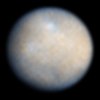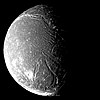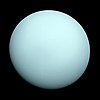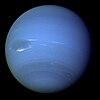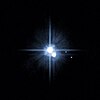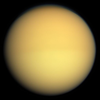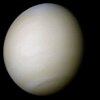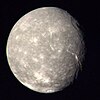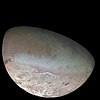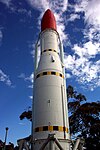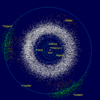This page is where the articles to be featured on the Outer space portal are listed. Feel free to make an entry for any article from Wikipedia:Featured articles#Physics and astronomy. It also contains an archive of Articles of the Month below.
Usage
The layout used to format these sub-pages is at
Portal:Space/Selected article/Layout
- Add a new selected article to the next available subpage.
- Update
"max=" to new total for its {{Random portal component}} on the main page.
Selected articles list
Selected article: 1-10
Portal:Outer space/Selected article/1
The Canadian robotics. In 1993 the partially built components for a Soviet/Russian space station
Mir-2, the proposed American
Freedom, and the proposed European
Columbus
Portal:Outer space/Selected article/2
A are dwarf planets, but the number might be as high as 2,000. The 2006 definition has been both praised and criticized, and has been disputed by some scientists.
Portal:Outer space/Selected article/3
extrasolar planets
—beginning in 1995 and accelerating thereafter—was the second milestone. It confirmed that the Sun is not unique in hosting planets and expanded the habitability research horizon beyond our own solar system.
Portal:Outer space/Selected article/4
The scientific papers since it was created. Three years after the HDF observations were taken, a region in the south celestial hemisphere was imaged in a similar way and named the
Hubble Deep Field South. The similarities between the two regions strengthened the belief that the
universe is uniform over large scales and that the
Earth occupies a typical region in the universe (the
cosmological principle
Portal:Outer space/Selected article/5
dirty snowball" model, which correctly surmised that Halley would be composed of a mixture of volatile
ices, such as
water,
carbon dioxide and
ammonia
Portal:Outer space/Selected article/6
The and decision-making processes had been a key contributing factor to the accident. The Challenger disaster has been used as a case study in many discussions of engineering safety and workplace ethics.
Portal:Outer space/Selected article/7
The
plutoids
".
Portal:Outer space/Selected article/8
The Soyuz flight and almost 1000 days in space for American astronauts over seven expeditions. The program was, however, marred by various concerns, notably the safety of
Mir following a fire and collision on board the station, financial issues with the cash-strapped Russian Space Program and worries from astronauts about the attitudes of the program administrators. Nevertheless, a large amount of science, expertise in space station construction and knowledge in working in a cooperative space venture was gained from the combined operations, allowing 'Phase Two' of the joint project, the construction of the
International Space Station
Portal:Outer space/Selected article/9
flyby of Uranus performed by the spacecraft
Voyager 2 in 1986, which managed to image 35% of the moon's surface. There are no plans at present to return to study the moon in more detail. After
Miranda, Ariel is the second-smallest of Uranus's five round satellites, and the second-closest to its planet. Among the smallest of the Solar System's 19 known spherical moons (it ranks 14th among them in diameter), Ariel is composed of roughly equal parts ice and rocky material. Like all of Uranus's moons, Ariel probably formed from an
accretion disk that surrounded the planet shortly after its formation, and, like other large moons, it may be
differentiated, with an inner core of rock surrounded by a
mantle of ice. Ariel has a complex surface comprising extensive cratered terrain cross-cut by a system of
scarps, canyons and ridges. The surface shows signs of more recent geological activity than other Uranian moons, most likely due to
tidal heating
Portal:Outer space/Selected article/10
core and ice
mantle. It may harbour an
ocean of liquid water underneath its surface. From the Earth, Ceres'
apparent magnitude ranges from 6.7 to 9.3, and hence at its brightest it is still too dim to be seen with the naked eye. The unmanned
Dawnspacecraft, launched on 27 September 2007 by
NASA
Selected article: 11-20
Portal:Outer space/Selected article/11
space probe showed Uranus as a virtually featureless planet in visible light without the cloud bands or
storms associated with the other giants. The
wind
Portal:Outer space/Selected article/12
ring system
, which may have been detected during the 1960s but was only indisputably confirmed by Voyager 2.
Portal:Outer space/Selected article/13
resources of Earth, as well as the products of the biosphere, contribute resources that are used to support a global human population. The human inhabitants are grouped into about 200 independent sovereign states and have developed many views of the planet.
Portal:Outer space/Selected article/14
The celestial body that humans have traveled to and landed on. The first artificial object to escape Earth's gravity and pass near the Moon was the
Soviet Union's
Luna 1, the first artificial object to impact the lunar surface was
Luna 2, and the first photographs of the normally occluded
far side of the Moon were made by
Luna 3, all in 1959. The
U.S. Apollo program
Portal:Outer space/Selected article/15
Apollo space program. Commander
Frank Borman, Command Module Pilot
James Lovell and Lunar Module Pilot
William Anders became the first humans to travel beyond
Earth orbit and into an orbit around the
Moon. It was also the first manned launch of the
Saturn V rocket. NASA prepared for the mission in only four months. The hardware involved had only been used a few times—the Saturn V had only launched twice before, and the Apollo spacecraft had only just finished its first manned mission,
Apollo 7. However the success of the mission paved the way for the successful completion of
John F. Kennedy's goal of landing on the Moon before the end of the decade. After launching on
December 21,
1968, the crew took three days to travel to the Moon, which they orbited for twenty hours. While in lunar orbit they made a
Christmas Eve
Portal:Outer space/Selected article/16

largest planet within the
Solar System. It is two and a half times as massive as all of the other planets in our Solar System combined. Jupiter, along with
Saturn,
Uranus, and
Neptune, is classified as a
gas giant. When viewed from Earth, Jupiter can reach an
apparent magnitude of -2.8, making it the fourth brightest object in the night sky. The planet was known by
astronomers of ancient times and was associated with the mythology and religious beliefs of many cultures. Jupiter is primarily composed of
hydrogen with only a small proportion of
helium; it may also have a rocky core of heavier elements. The outer atmosphere is visibly segregated into several bands at different
latitudes, resulting in turbulence and storms along their interacting boundaries. A prominent result is the
Great Red Spot, a giant storm that is known to have existed since at least the seventeenth century. Surrounding the planet is a faint planetary ring system and a powerful
magnetosphere. There are also at least 67 moons, including the four large moons called the
Galilean moons that were first discovered by
Galileo Galilei in 1610. Jupiter has been explored on several occasions by robotic spacecraft, most notably during the early
Pioneer and
Voyager fly-by missions and later by the
Galileo orbiter
Portal:Outer space/Selected article/17
Samoyed
terrier weighing approximately 6 kg (13 lb). Laika died on November 4, 1957, a few hours after launch, due to
overheating, and her remains were destroyed during re-entry on April 14, 1958. Her true
cause of death was not made public until years after the flight, with officials always stating that she was either
euthanized by
poisoned
Portal:Outer space/Selected article/18
Opportunity). Geological evidence gathered by these and preceding missions suggests that Mars previously had large-scale water coverage, while observations also indicate that small
geyser-like water flows have occurred in recent years. Mars has two
moons,
Phobos and
Deimos
Portal:Outer space/Selected article/19
The near infrared. The telescope is named after the
astronomer Edwin Hubble. Although not the first space telescope, Hubble is one of the largest and most versatile, and is well known as both a vital research tool and a public relations boon for
astronomy. The HST was built by the United States space agency
NASA, with contributions from the
European Space Agency, and is operated by the
Space Telescope Science Institute. Space telescopes were proposed as early as 1923. Hubble was funded in the 1970s, with a proposed launch in 1983, but the project was beset by technical delays, budget problems, and the
Challenger disaster
Portal:Outer space/Selected article/20
S/2012 (134340) 1
, discovered in 2012.
Selected article: 21-30
Portal:Outer space/Selected article/21
The
cleared its neighbourhood
" of smaller objects around its orbit. Under this new definition, Pluto and the other trans-Neptunian objects do not qualify as planets.
Portal:Outer space/Selected article/22
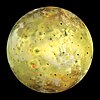
Io is the innermost of the four Galilean moons of the planet Jupiter and, with a diameter of 3,642 kilometres (2,263 mi), the fourth-largest moon in the Solar System. It was named after the mythological character of Io, a priestess of Hera who became one of the lovers of Zeus. With over 400 active volcanoes, Io is the most geologically active object in the Solar System. This extreme geologic activity is the result of tidal heating from friction generated within Io's interior as it is pulled between Jupiter and the other Galilean satellites—Europa, Ganymede and Callisto. Several volcanoes produce plumes of sulfur and sulfur dioxide that climb as high as 500 km (300 mi) above the surface. Io's surface is also dotted with more than 100 mountains that have been uplifted by extensive compression at the base of the moon's silicate crust. Some of these peaks are taller than Earth's Mount Everest. Unlike most satellites in the outer Solar System, which are mostly composed of water-ice, Io is primarily composed of silicate rock surrounding a molten iron or iron sulfide core. Most of Io's surface is characterized by extensive plains coated with sulfur and sulfur dioxide frost. Io's volcanism is responsible for many of the satellite's unique features. Its volcanic plumes and lava flows produce large surface changes and paint the surface in various shades of yellow, red, white, black, and green, largely due to allotropes and compounds of sulfur. Numerous extensive lava flows, several more than 500 km (300 mi) in length, also mark the surface. The materials produced by this volcanism provide material for Io's thin, patchy atmosphere and Jupiter's extensive magnetosphere. Io's volcanic ejecta also produce a large plasma torus around Jupiter.
Portal:Outer space/Selected article/23
astronomical symbol (♄) represents the Roman god's
sickle. Along with Jupiter,
Uranus and
Neptune, Saturn is a
gas giant. Together, these four planets are sometimes referred to as the Jovian planets, meaning "Jupiter-like". Saturn has a
ring system that is divided into nine continuous and three discontinuous main rings (arcs), consisting mostly of ice particles with a smaller amount of rocky debris and
dust. Sixty-two known
moons orbit the planet; fifty-three are officially named. This does not include the hundreds of "
moonlets" within the rings.
Titan, Saturn's largest and the Solar System's second largest moon (after Jupiter's
Ganymede), is larger than the planet
Mercury
Portal:Outer space/Selected article/24
km below Ganymede's surface. Ganymede is the only satellite in the Solar System known to possess a
magnetosphere, likely created through
convection within the liquid iron core. The satellite has a thin
oxygen atmosphere that includes O, O
2, and possibly
O3. Ganymede's discovery is credited to
Galileo Galilei, who observed it in 1610. The satellite's name was soon suggested by astronomer
Simon Marius, for the mythological
Ganymede, cupbearer of the
Greek gods and
Zeus's
Portal:Outer space/Selected article/25
second-largest natural satellite in the
Solar System, after
Jupiter's moon
Ganymede, and it is larger by volume than the smallest planet,
Mercury. Titan itself is primarily composed of water ice and rocky material. Its dense, opaque atmosphere meant that little was known of the surface features or conditions until the
Cassini–Huygens mission in 2004. Although mountains and several possible
cryovolcanoes have been discovered, its surface is relatively smooth and few
impact craters have been found. Owing to the existence of stable bodies of surface liquids and its thick nitrogen-based atmosphere, Titan has been cited as a possible host for
microbial extraterrestrial life
Portal:Outer space/Selected article/26
Venus is the second
inferior planet from Earth, it never appears to venture far from the Sun: its
elongation reaches a maximum of 47.8°. Venus reaches its maximum brightness shortly before sunrise or shortly after sunset, for which reason it has been referred to by ancient cultures as the Morning Star or Evening Star.
Venus is a
.
Portal:Outer space/Selected article/27
endogenic processes. It is covered by numerous
impact craters reaching 326 km in diameter, but is less heavily cratered than the surface of Uranus' outermost moon,
Oberon. Titania probably underwent an early endogenic resurfacing event that obliterated its older, heavily cratered surface. Like all major moons of Uranus, Titania probably formed from an
accretion disk that surrounded the planet just after its formation. As of 2013, the Uranian system has been studied up close only once: by the spacecraft
Voyager 2
Portal:Outer space/Selected article/28
closer to the Sun than the Earth
), and at times Mercury can technically be regarded as a very bright object when viewed from Earth; however, its proximity in the sky to the Sun makes it more difficult to see than Venus.
Portal:Outer space/Selected article/29

The spectral type G2V yellow
star at the center of the
Solar System. The
Earth and many other bodies (including other
planets,
asteroids,
meteoroids,
comets and
dust)
orbit the Sun, which accounts for more than 99% of the Solar System's
mass. Different
latitudes of the Sun rotate at different rates; a point on the
equator takes 25 days, while a point at a pole takes 36 days. The resultant torsion upsets the Sun's very strong
magnetic field to create an 11-year
solar cycle of activity. Heat and light from the Sun have supported almost all
life on Earth. Humans use
sunlight to grow
crops (see
photosynthesis) and power
solar cells. The Sun is a ball of
plasma with a diameter of 1.392 million km (864,950 mi) and a mass of about 2.0
×10
30 kg, which is somewhat higher than that of an average star. About 74% of its mass is
hydrogen, with 25%
helium, and the rest made up of trace quantities of heavier elements. The Sun is about 4.6
billion years old, and is about halfway through its
main sequence evolution, during which
nuclear fusion
Portal:Outer space/Selected article/30
seventh-largest moon in the Solar System. Because of its retrograde orbit and composition similar to
Pluto's, Triton is thought to have been captured from the
Kuiper belt. Triton consists of a crust of frozen
nitrogen over an icy mantle believed to cover a substantial core of rock and metal. The core makes up two-thirds of its total mass. Triton has a mean density of 2.061 g/cm
3 (1.191 oz/cu in) and is composed of approximately 15–35% water ice. Triton is one of the few moons in the Solar System known to be geologically active. As a consequence, its surface is relatively young, with a complex geological history revealed in intricate and mysterious cryovolcanic and tectonic terrains. Part of its crust is dotted with geysers believed to erupt
nitrogen
Selected article: 31-40
Portal:Outer space/Selected article/31
The recorded
originated on Mars
has allowed laboratory examination of the chemical conditions on the planet.
Portal:Outer space/Selected article/32
molecular oxygen, as well as by a rather dense
ionosphere
Portal:Outer space/Selected article/33
calculated to be cheaper than maintaining the Black Arrow programme.
Portal:Outer space/Selected article/34

The Solar System consists of the Sun and its planetary system of eight planets, their moons, and other non-stellar objects. It formed 4.6 billion years ago from the gravitational collapse of a giant molecular cloud. The vast majority of the system's mass is in the Sun, with most of the remaining mass contained in Jupiter. The four smaller inner planets, the terrestrial planets, are primarily composed of rock and metal. The four outer planets, the giant planets, are substantially more massive than the terrestrials. The Solar System also contains a number of regions populated by smaller objects. The asteroid belt, which lies between Mars and Jupiter, is composed of material similar to that of the terrestrial planets. Beyond Neptune's orbit lie the Kuiper belt and scattered disc, linked populations of trans-Neptunian objects composed mostly of ices. These populations include objects large enough to have been rounded by their own gravity, termed dwarf planets. Identified dwarf planets include the asteroid Ceres and the trans-Neptunian objects Pluto, Eris, Haumea, and Makemake. Six of the planets, at least three of the dwarf planets, and many of the smaller bodies are orbited by natural satellites, usually termed "moons" after the Moon, Earth's natural satellite.
Portal:Outer space/Selected article/35
light-years from Earth, providing early evidence that GRBs occur well beyond the
Milky Way
Portal:Outer space/Selected article/36
A on 5 and 6 June 2012; the next will be 10–11 December 2117. Historically, Venus transits were of great scientific importance as they were used to gain the first realistic estimates of the size of the
Solar System. The 2012 transit provided scientists with a number of other research opportunities, particularly in the refinement of techniques to be used in the search for
exoplanets
Portal:Outer space/Selected article/37
The main asteroid belt. Like main belt asteroids, Trojans form
families. Jupiter Trojans are dark bodies with reddish, featureless
spectra. No firm evidence of the presence of water,
organic matter or other chemical compounds has been obtained. The Trojans' densities (as measured by studying
binaries or rotational lightcurves) vary from 0.8 to 2.5 g·cm
−3. Trojans are thought to have been captured into their orbits during the early stages of the Solar System's formation or slightly later, during the
migration
Portal:Outer space/Selected article/38
creatures which inhabited Mount Ida in Greek mythology. Data returned from the flyby pointed to S-type asteroids as the source for the
ordinary chondrite
Portal:Outer space/Selected article/39
A . No extrasolar dwarf planets have been detected.
Portal:Outer space/Selected article/40
The
Centaurs
and Jupiter-family comets.
Nominations
Feel free to add any featured or good articles to the list above. You can also nominate other articles relating to space here.


